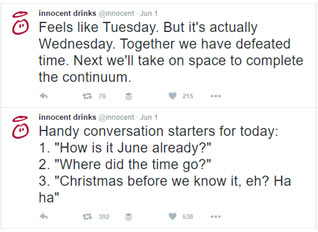I invited Raj Mistry to write about recruitment strategies for us. Raj worked in the corporate world for over 30 years, recruiting people both internally and externally, so has a lot of experience in recruitment.

The Combination Approach: Using Multiple Recruitment Strategies
As a recruiter, you’re probably aware of the statistic that says 80% of available vacancies aren’t advertised. So how do companies find the right candidates? They use multiple strategies: the most important being promoting their brand. Brand awareness is a crucial aspect not only for hiring top talent but also for your business as a whole. Establishing your brand makes you memorable, but how do you effectively build it?
Company Branding
Your brand encompasses everything your company stands for: your reputation, your values and your goals. It’s the one thing that can separate you from your competitors and every other business on the market. Who doesn’t instantly recognise the Starbucks logo or the golden McDonalds ‘M’?
Strong branding isn’t just important for earning custom and establishing your expertise to your target audience. It’s also one of the key strategies for finding the right candidates for your vacancy and gaining a large amount of applications. Increasing your brand awareness will not only make people want to work for your company, but it will make the right people want to work for you – those with the skill set and traits you need in an employee.
To define your brand, you need to ask yourself some difficult questions. You may already have a brand and be the leading business in your industry, but you should reevaluate on a regular basis. Your business is constantly evolving with every decision you make, and so your brand and marketing efforts should too.
What Is Your Company Mission?
Your company mission is what sets you apart. Every business wants to provide expertise and the best customer or client service, but this alone won’t make you stand out. Make it personal. Your audience aren’t just customers or a potential pay packet – they’re human beings with aspirations and personal goals of their own. Make your mission statement inclusive, align yourself with the values of your customers and make yourself accessible. Regular communication with your customers is particularly helpful here. Everyone likes to feel valued, so asking them about their lives will make them feel appreciated. Not only can this earn you more custom, but potential employees will identify with your brand. This means you’ll be able to employ people who are excited to work with a business with a solid brand awareness (meaning more productivity) and who understand your company’s mission.
A Quick Word on Job Boards
Whether you like them or not, job boards are still the most effective recruitment tool for employers. The majority of active job seekers will regularly be utilising job boards in their search. In fact, job boards are searched by millions of people every day. For job seekers, this makes for a hugely competitive environment, but for recruiters, this is great news. They may not be the most innovative form of recruitment in an age where social media is king, but they’re definitely not going anywhere in a hurry. You can maximise the effectiveness of your job advert by using niche job boards: those catering either to your industry or your location. This gives you a much more specialised pool of candidates to choose from, who are more likely to have the skills and experience you seek.
Using Social Media
Hailed as the “key to recruiting in the 21st century”, the impact of social media on the industry is undeniable. Social networks provide companies with a way of being constantly on their audience’s news feeds. They’re available for instant communication and, with the right marketing strategy, visible at the optimum time.
How to Use LinkedIn
Out of all social networks, LinkedIn is the preferred choice for social recruiting. 79% of candidates hired through social media came from LinkedIn. As a professional network, it allows employers to connect with potential employees, who themselves can state their qualifications and experience and earn testimonials from their own connections.
As a company, it’s important for you to extend your brand to your LinkedIn profile. Cultivate a positive work culture by inviting your employees to join your page and establish your expertise by regularly sharing and posting relevant articles. LinkedIn allows you to assess a candidate’s profile to see whether they’re a good fit, and you can ask for references from trusted individuals in your network. However, not every potential prospect will have a LinkedIn profile, as they may not be actively searching for work. You should also be focusing on passive candidates.
Connecting with Passive Candidates
Did you know that on average, passive candidates require 17% less skill development than active candidates? This is for a variety of reasons.
Passive candidates – those not actively seeking work – are more than likely already employed in a relevant position, meaning they possess the skills and experience that could be perfect for your company. If active prospects have been out of work for a while, or are applying for an entry-level position, you may have to provide them with significant training before they’re confident and able enough to perform their job role autonomously. So how do you target passive candidates?
With 2.2 billion people worldwide registered on a social network, there’s a goldmine of talent waiting for you on Twitter and Facebook. It’s not a simple case of alerting your followers to work opportunities, but about having a solid marketing strategy. Do a little digging and find out what hashtags your ideal candidate is using, or incorporate relevant news into your updates and add a personal touch to your business. Innocent Drinks is a great example of a company that engages regularly with its followers and doesn’t focus all of its social media efforts on blatantly marketing its products. It comes across as personal and fun, a great recipe for creating a brand that candidates want to work for.

By creating content that gets noticed and shared, you may find it appearing on the timeline of your perfect prospect. The added bonus is that it works wonders for your brand image. You can see the incredible levels of engagement that can be earned, even if the update itself has nothing to do with your product!
Putting It All Together: The Combination Approach
Each of these methods can work independently, but to achieve maximum outreach, you should be combining all of these efforts — with each playing a part in your meticulously organised recruitment strategy.
Passive candidates may on average require less training and recognition than their active counterparts, but that doesn’t mean you should neglect those seeking work. Active candidates are just as likely to have a social media presence, so make your updates count and alert them to your vacancies with a link to the application.
The use of Twitter has cultivated the art of brevity, but it’s still difficult to sell something in 140 characters. So how can you make it count? Rather than an endless list of skills, emphasise impact. What can you do for your employees, and what will they do for you? Invite candidates to get in touch for a brief, informal chat, and uncover what motivates them and what their interests are (their own profile can be a treasure trove of insight into their personality).
The days of traditional recruitment done through a CV in the post are long gone, and digital is taking the charge. From online job boards to social networking, these strategies will prove most effective when used together. With brand awareness in place, combined with a structured marketing strategy, you put your business on the path to attracting only the best talent.
Raj Mistry is a partner at Top Suffolk Jobs, a jobs board dedicated to helping recruiters and job seekers in Suffolk. Having worked in the corporate world for over 30 years, he was involved in recruiting people both internally and externally. This brought challenges of finding out how individuals learn, identifying their strengths and developing their potential. After leaving the corporate world in 2014 he set up his own business managing property which he runs with his wife and has recently set up an internet marketing company.
Lucy is Editor at Corporate Eye


